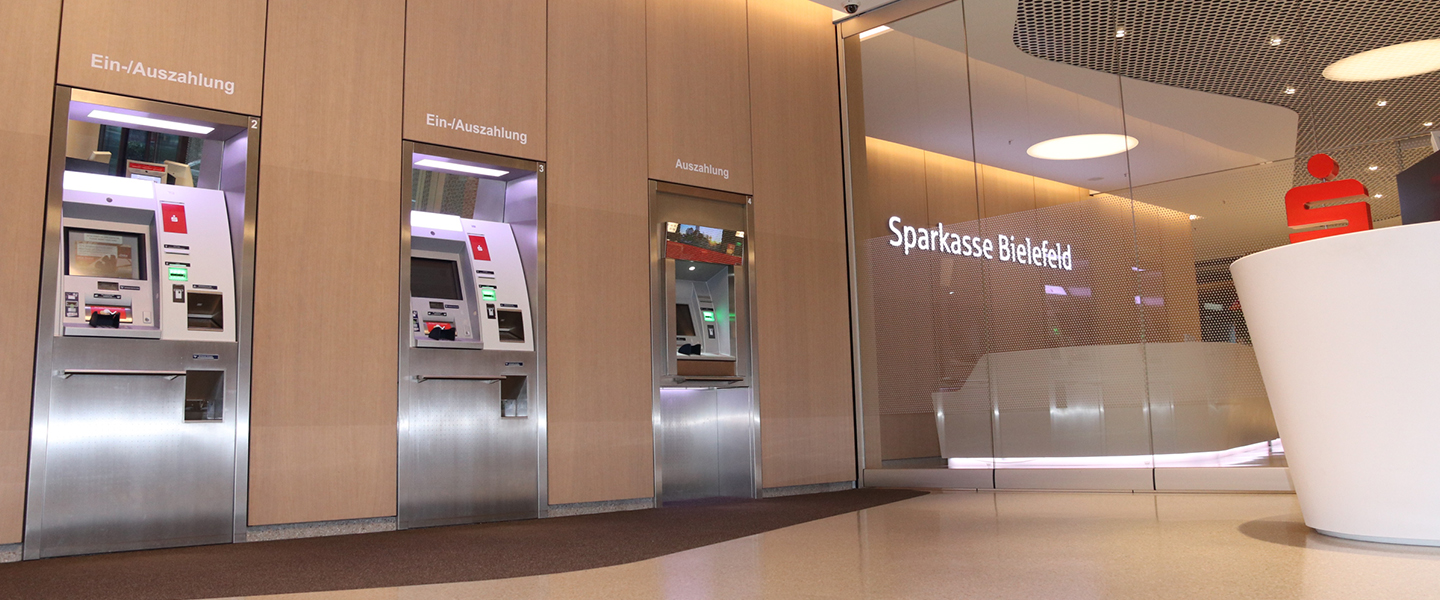Small and medium-sized businesses (SMBs) make up more than 90% of all companies worldwide and more than half of all employees; they are truly the backbone of the global economy. For the financial industry, this means that banks generally make 20% of their revenue with SMBs.
We recently sat down with Lars Schneider, Head of Technical Services at
Sparkasse Bielefeld, to discuss how his organization has proactively addressed their SMB clients’ emerging needs.
How important are SMBs for your financial institution?
Almost our entire region is made up of medium-sized companies, which is why SMBs are one of our largest customer groups.
In addition, most SMBs prefer to handle their personal and business financial affairs with the same institution. Consequently, if you lose one of these customers, you lose 2-in-1.
What special requirements does this segment have?
Compared to private individuals, the banking transactions of SMBs are more complex, but they usually handle them personally, in contrast to larger companies that have employees or even entire departments. Therefore, the need for advice and assistance is quite high, but business customers have little or no time to go to the branch. That is why we have opened a business center in order to offer business customers advice tailored to their needs—be it through specific products, specially trained contacts, or improved telephone and online accessibility.
The issue of payment methods in particular is an important factor for SMBs. The possibilities are increasing in this area and in addition to various digital payments they still have to accept a large amount of cash. Cash payments continue to be very important in Germany, which is why SMBs with a local presence in particular must offer both options.
What’s your approach to managing high volumes of cash for your SMB clients?
SMBs want to be able to deposit a large amount of cash quickly and flexibly at any time, with a direct booking to their account. Often, they also need coin and currency for their daily business operations.
In order to be able to offer these improved services, but at the same time to significantly reduce our expenses for post-processing the cash transactions of SMBs, we decided in 2016 to completely shift those transactions to self-service or assisted self-service. So now, no matter what kind of cash service an SMB customer requests, the cash is delivered or stored via the ATM/self-service device. Additionally the teller can assist the SMB client in a complex request via an assisted-services approach, where he can initiate transactions from the counter, and the cash transaction itself will be fulfilled at the self-service device. We benefit here from a fast and easy self-service transaction but with the opportunity to have a personal interaction.
We also introduced messenger cards for the SMBs, so they’re able to send a staff member to conduct a transaction and withdraw cash via the ATM instead of handling their transactions at the counter.
Since then, our business customers have benefited from faster deposits, that are booked directly and available 24/7.
How did your approach change over time?
We have been pursuing the topic of cash automation for a very long time. We have gradually gone deeper into the automation process:
1. As early as 1986, we started to roll out self-service solutions, ATMs, in order to be able to migrate counter transactions to self-service.
2. At the same time, cash processes at the counter were automated with the help of teller cash recyclers (TCRs) from the beginning of the 1990s. At the end of 1999, all 60 branches were equipped with ATMs, and a total of 90 machines made 6.3 million withdrawals. At the same time, 3.3 million cash transactions operated by staff were carried out. In 25 branches, the classic cash registers had already been replaced by TCRs.
3. In addition to the TCRs and ATMs, we introduced self-service deposit machines in 1998 to further automate cash handling. However, it remained a complex logistical effort to supply our branches with cash.
4. As more appropriate systems became available, it was a logical next step in 2003 to introduce cash recycling and thus to check the cash deposited by customers into self-service machines in a legally secure manner for authenticity and fitness and to pay them out again immediately.
5. Today we operate 90 cash recyclers and 35 ATMs at 53 locations in Bielefeld (including 20 fully automated). Thanks to the complete transaction migration we introduced four years ago, today all transactions are handled by our self-service devices and mainly by our customers on their own. In 2019 around 9 million transactions were processed using our self-service devices; only around 450,000 transactions had to be conducted by our employees in the form of assisted self-service.
Your service for SMBs has improved significantly and continuously. How have your costs been affected?
Our self-service quota for deposits has increased to over 95% and we have since been able to completely remove traditional tellers, night safes and automated teller safes. Due to the migration of business deposits to self-service systems and the removal of TCRs, we were able to free up eight FTE from cash-handling tasks. The costs per deposit at self-service devices are approximately €1, which is around 80% less than a cash deposit at a traditional teller, which costs around €5. Today, our recycling quota is close to 90%, which means that almost all cash deposits from our customers are available for withdrawal without the need to handle it manually. This saves additional time and costs.
Learn more about how you can reduce costs while enhancing relationships with your SMB clients. Download our free fintech guide, “The SMB Opportunity” today!
